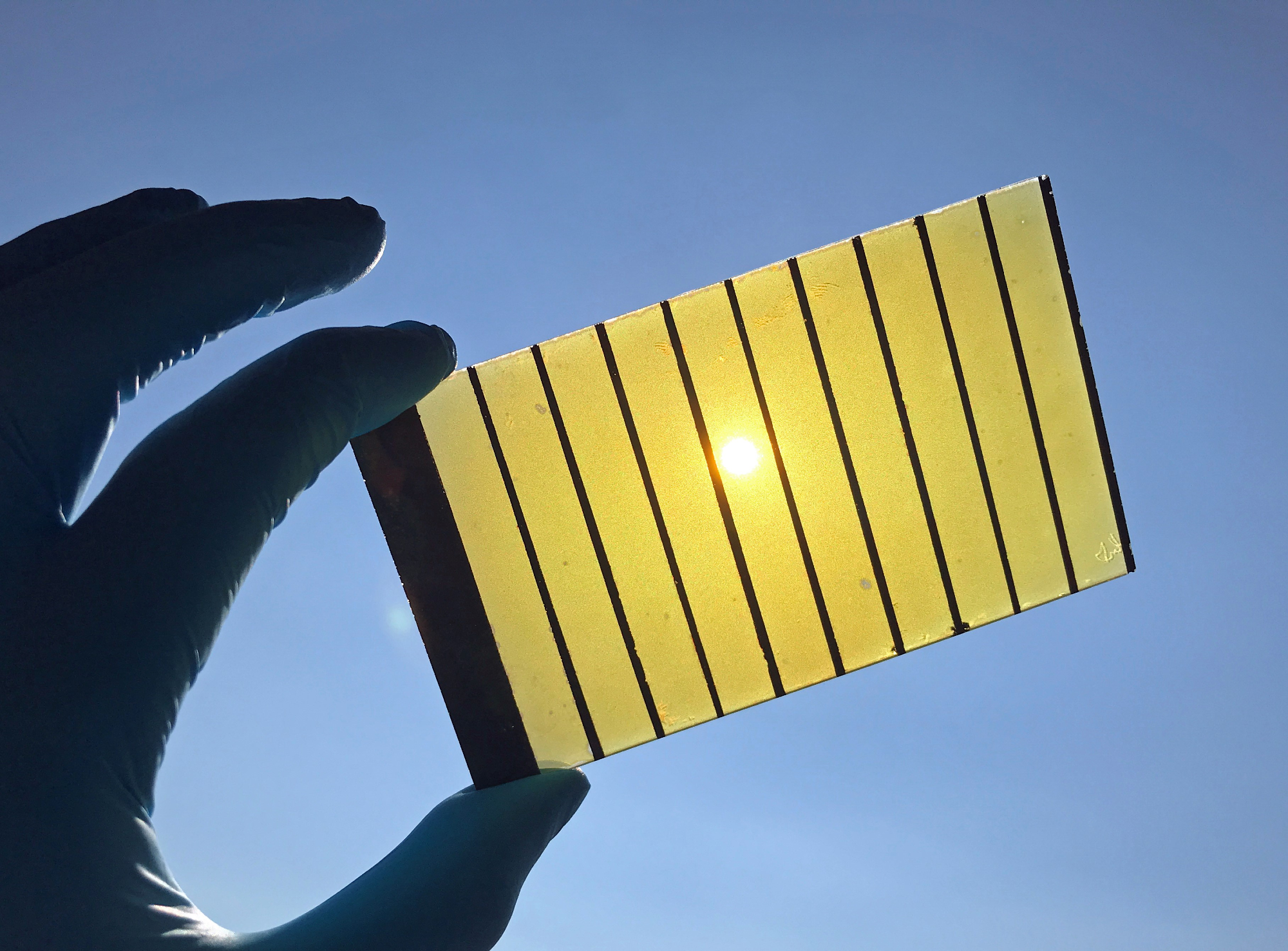Oct 27 2020
Researchers at the Helmholtz-Zentrum Berlin (HZB), who are part of an international collaboration, have analyzed the corrosion processes of superior-quality bismuth vanadate (BiVO4) photoelectrodes using various advanced characterization approaches.
 Scalable large area BiVO4 photoanode on FTO with Ni current collectors. Image Credit: © Helmholtz-Zentrum Berlin.
Scalable large area BiVO4 photoanode on FTO with Ni current collectors. Image Credit: © Helmholtz-Zentrum Berlin.
The outcome is the first operando stability analysis of high-purity BiVO4 photoanodes during the photoelectrochemical oxygen evolution reaction (OER).
This study reveals how the stability of catalysts and photoelectrodes can be compared and improved in the future.
Hydrogen is a multipurpose fuel that can store and discharge chemical energy when required. Hydrogen can be made using solar energy in a climate-neutral method by the electrolytic splitting of water into hydrogen and oxygen.
This can be realized photo-electrochemically (PEC), and for this method, it is essential to have economical photoelectrodes that deliver a specific photovoltage under illumination and stay stable in aqueous electrolytes.
Stability of Photoelectrodes
However, the main hindrance is that traditional semiconductors tend to corrode very rapidly in water. Metal-oxide thin films are a lot more stable but still corrode after a period of time. BiVO4 is one of the most effective photoanode materials. It is a compound metal oxide wherein photocurrents are already close to the theoretical limit.
However, at present, the biggest hurdle for commercially feasible PEC water splitting is to evaluate and improve the stability of photoelectrode materials during the PEC process.
Led by Prof. Roel van de Krol (HZB), a group of researchers at the HZB Institute for Solar Fuels, along with groups from the Max Planck Institute for Iron Research, the Helmholtz Institute Erlangen-Nuremberg for Renewable Energy, the University of Freiburg, and Imperial College London employed several advanced characterization approaches to comprehend the corrosion processes of superior-quality BiVO4 photoelectrodes.
Observing the Process from Start to the End
So far, we could only examine photoelectrodes before and after photoelectrochemical corrosion. It was a bit like reading only the first and last chapters of a book, and not knowing how all the characters died.
Dr Ibbi Ahmet, Study Researcher, Helmholtz-Zentrum Berlin
Dr. Ahmet initiated the study in collaboration with Siyuan Zhang from the Max Planck Institute.
As an initial step to overcome this issue, the chemist offered a series of high-purity BiVO4 thin films that were examined in a newly built flow cell with various electrolytes under regular illumination.
First Operando Stability Study
The outcome is the first operando stability research of high-purity BiVO4 photoanodes when the photoelectrochemical oxygen evolution reaction (OER) is in process. The researchers used in-situ plasma mass spectrometry (ICPMS) and could establish which elements dissolved from the surface of the BiVO4 photoanodes during the photoelectrochemical reaction.
Stability Number S
From these measurements we were able to determine a useful parameter, the stability number (S).
Dr Ibbi Ahmet, Study Researcher, Helmholtz-Zentrum Berlin
This stability number is computed from the ratio between the O2 molecules created and the number of dissolved metal atoms in the electrolyte. This number is, in fact, an accurate comparable measure of the stabilities of photoelectrodes. A photoelectrode’s stability is high if water splitting proceeds quickly (here, the evolution of O2) and few metal atoms get into the electrolyte.
This factor can also be used to establish the variation in photoelectrode stability during their lifespan or evaluate changes in the stability of BiVO4 in different pH-buffered borate, citrate (hole scavenger), and phosphate electrolytes.
This research reveals how the stability of catalysts and photoelectrodes can be compared in future projects. The researchers have continued the partnership and are currently using these valuable methods and insights to come up with feasible solutions to improve the stability of BiVO4 photoanodes and allow their use in long-term real-world applications.
Journal Reference:
Zhang, S., et al. (2020) Different Photostability of BiVO4 in Near-pH-Neutral Electrolytes. ACS Applied Energy Materials. doi.org/10.1021/acsaem.0c01904.